Yukon: three mines producing and more on the way

It wasn’t so long ago that Canada’s Yukon didn’t have any producing mines except placer gold operations. That has now changed and the territory has three producing mines, including Victoria Gold Corp.’s Eagle gold mine, the Minto copper-gold mine and Alexco Resources Corp.’s Keno Hill silver mine.
Victoria Gold’s heap leach Eagle mine is part of the larger Dublin Gulch Project 85 kilometres north of Mayo and ranks as the largest hard rock gold mine in Yukon’s history. This year, the mine is expected to produce between 180,000 and 200,000 ounces of gold.
Minto Exploration, along with LME-listed, Pembridge Resources, own the 4,000 tonne-per-day Minto underground copper-gold mine 240 kilometres north of the capital of Whitehorse.
During Q1 2021, Alexco Resource Corp. mined 4,427 tonnes of ore solely from the Bellekeno mine. The company is currently advancing Keno Hill to production, and started concentrate production and shipments in Q1 2021.
In late May Alexco has filed an updated technical report for its Keno Hill operations, expanding the mineral reserve by 22% to 1.44 million tonnes, averaging 804 g/t silver, 3.84% zinc, 2.64% lead and 0.31 g/t gold, or approximately 1,035 g/t silver equivalent. The updated reserve mine plan is projected to produce over 35.5 million ounces of silver over the next eight years.
The Updated life-of-mine plan average annual production is 4.4 million ounces of silver at an average all-in sustaining cost (AISC), including corporate costs and working capital, of US$11.59/oz.
There are other mineral projects under way. This is not surprising as not only is Yukon still an under-explored, yet very prospective frontier, the Fraser Institute ranked the Yukon as one the top 10 most attractive jurisdictions globally for mining investment.
These are the two main reasons that Yukon’s major industry is mining (lead, zinc, silver, gold and copper): The Hudson’s Bay Company used to control this region and the Canadian government acquired the land in 1870 from HBC and split it from the Northwest Territories in 1898. This was in reaction to the thousands of prospectors who moved there to join the Klondike Gold Rush that eventually saw some 20 million ounces of placer gold recovered.
Today, modern exploration technologies are discovering new previously unknown mineral deposits that have resulted in a number of development-stage projects.
One of the biggest is the Western Copper and Gold that recently received a $25.6-million strategic investment by Rio Tinto Canada Inc. to advance the company’s copper-gold-molybdenum Casino project. Rio Tinto will now own about 8% of Western Copper’s shares.
“We are pleased to welcome Rio Tinto as a strategic investor in the company,” said Paul West-Sells, president and CEO. “The investment by Rio Tinto, a leading global mining group, which operates in 35 countries around the world and whose purpose is to produce the materials essential to human progress, is a strong endorsement of the Casino project.”
Western Copper released the results of its positive PEA that considered the project being constructed as an open pit mine, with a concentrator processing nominally 120,000 tonnes per day and a gold heap leach facility processing nominally 25,000 tonnes per day. The Casino PEA envisages an initial capital investment of $3.25 billion as well as life of mine pre-tax cash flow of $13 billion ($9.1 billion) after tax.
The Casino Project is estimated to host measured and indicated resources of 14.5 million ounces of gold and 7.6 billion pounds of copper as well as inferred resources of 6.6 million ounces of gold and 3.3 billion pounds of copper which was the used as the basis for the PEA.
In the same region is Triumph Gold Corp.’s Freegold Mountain Project that is host to three NI 43-101 mineral deposits – the Nucleus, Revenue and Tinta Hill. Also in the same region is Newmont Corp.’s Coffee deposit, a heap leach, open pit project in the pre-feasibility stage.
Rockhaven Resources Ltd.’s has a positive PEA for its Klaza Project that hosts indicated resources of 4.5 million tonnes containing 686,000 ounces gold and 14.1 million ounces silver and inferred resources of 5.7 million tonnes containing 507,000 ounces gold and 13.9 million ounces silver.
Another promising project is the Golden Predator Mining Corp. Brewery Creek heap leach gold project where a bankable feasibility study is under way.
Granite Creek Copper is conducting a 10,000-metre drilling program at its Carmacks copper-gold-silver project – just south of the operating Minto mine described above – with the objective of upgrading inferred resources as well as delineating new resources – see profile below.
Metallic Minerals Corp. is exploring its flagship Keno Silver Project in the Keno Hill Silver District contiguous to Alexco’s Keno Hill Mines – see profile below.
White Gold Corp.’s portfolio includes over 40% of the White Gold District where it has the flagship Golden Saddle and Arc gold deposits. Both Kinross Gold Corp. and Agnico Eagle Mines Ltd. have shares in White Gold.
The Yukon government is gradually improving access infrastructure and major land routes include the Alaska Highway, the Klondike Highway (between Skagway and Dawson City), the Haines Highway (between Haines, Alaska, and Haines Junction), and the Dempster Highway (linking Inuvik, Northwest Territories to the Klondike Highway, and the only road access route to the Arctic Ocean, in Canada), all paved except for the Dempster. There are other too numerous to list.
Yukon represents an outstanding jurisdiction for mineral discovery and mine building with the advantage of a welcoming government.
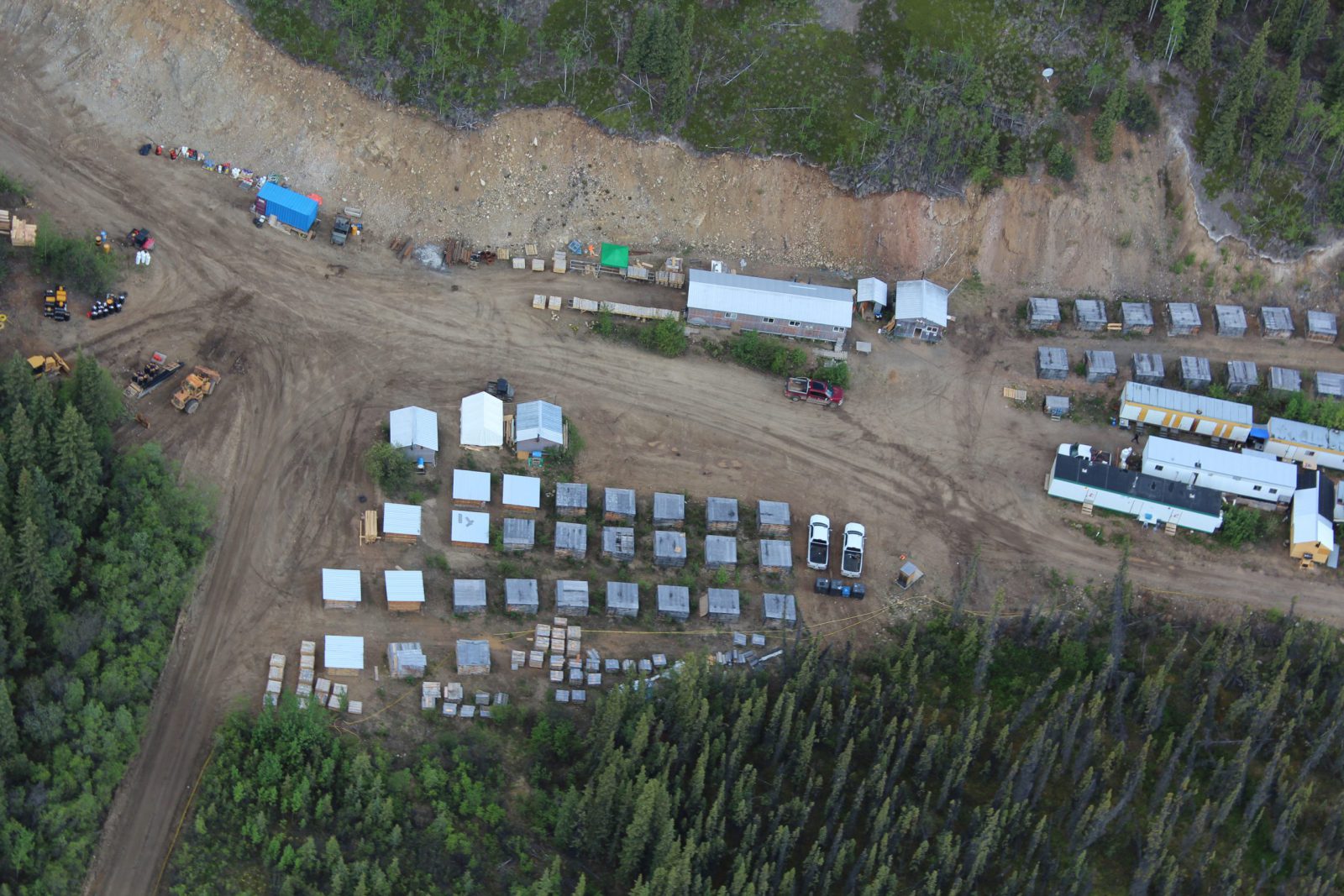 Granite Creek Copper Ltd. [GCX-TSXV; GCXXF-OTCQB] is a company that offers investors a window on high-grade copper-gold exploration and development in Canada’s prolific Minto Copper Belt. It is also a member of the Vancouver-based Metallic Group of companies.
Granite Creek Copper Ltd. [GCX-TSXV; GCXXF-OTCQB] is a company that offers investors a window on high-grade copper-gold exploration and development in Canada’s prolific Minto Copper Belt. It is also a member of the Vancouver-based Metallic Group of companies.
The Minto Copper belt is a northwest trending corridor of mineralization in the west-central Yukon, about 192 kilometres north of Whitehorse that includes the Carmacks copper-gold-silver deposit, the active Minto copper-gold mine and several other copper-gold-silver showings.
Carmacks is part of the large land package that Granite Creek consolidated last year through the acquisition of its neighbour, Copper North Mining Corp. The combined property, now controlled by Granite Creek, includes the PEA-stage Carmacks Copper project and the adjacent highly perspective Carmacks North target area (formerly Stu Copper-Gold project).
The 100%-owned, newly constituted 176-km2 Carmacks property is on trend with the high-grade Minto copper-gold mine to the north and its excellent access to infrastructure includes the paved Yukon Highway 2 within 60 kilometres as well as grid power within 12 kilometres.
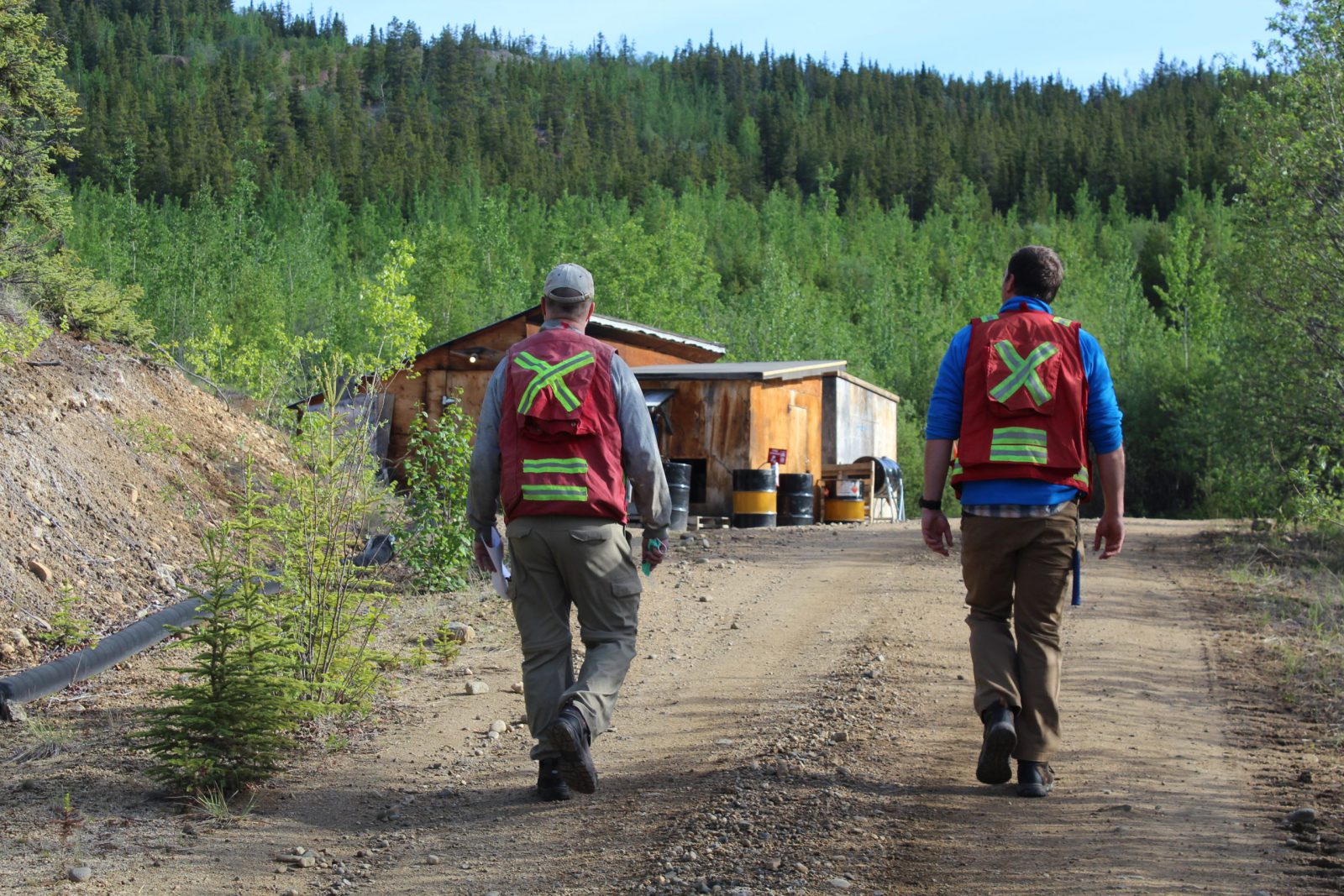 According to a 2021 PEA update, the Minto mine, owned by Minto Exploration and Pembridge Resources, is expected to produce 277 million pounds of copper, 129,000 ounces of gold, and  930,000 oz of silver over a contemplated eight-year mine life. That assessment is based on 11.09 million tonnes of M&I resources grading 1.46% Cu, 0.53 g/t Au, and 4.75 g/t Ag. There is a further inferred resource of 13.03 MT grading 1.29% Cu, 0.49 g/t Au, and 4.55 g/t Ag. This equates to 356 million lbs Cu, 189,000 oz Au and 1.86 Moz Ag (M&I) plus 370 Mlbs Cu, 207,000 oz Au and 2.09 Moz Ag. It is anticipated that upgrading inferred to M&I will extend the Minto mine life to 2028, according to a Pembridge study.
According to a 2021 PEA update, the Minto mine, owned by Minto Exploration and Pembridge Resources, is expected to produce 277 million pounds of copper, 129,000 ounces of gold, and  930,000 oz of silver over a contemplated eight-year mine life. That assessment is based on 11.09 million tonnes of M&I resources grading 1.46% Cu, 0.53 g/t Au, and 4.75 g/t Ag. There is a further inferred resource of 13.03 MT grading 1.29% Cu, 0.49 g/t Au, and 4.55 g/t Ag. This equates to 356 million lbs Cu, 189,000 oz Au and 1.86 Moz Ag (M&I) plus 370 Mlbs Cu, 207,000 oz Au and 2.09 Moz Ag. It is anticipated that upgrading inferred to M&I will extend the Minto mine life to 2028, according to a Pembridge study.
Minto Explorations Ltd., 1246778 B.C. LTD. and Pembridge Resources have entered into a series of agreements that will see Minto going public by way of a reverse take-over of 778 and list the resulting issuer shares on the TSX Venture Exchange. The entity resulting from the combination of 778 and Minto, to be renamed Minto Metals Corp., will have 100% ownership of the cash flow from the Minto Mine with a large land package totaling ~26,000 hectares.
 Granite Creek has said the acquisition of Copper North resulted in the combination of the advanced-stage Carmacks deposit, with 23.76 million tonnes (oxide and sulfide combined) grading 0.85% copper, 0.31 g/t gold, containing 446 million pounds of copper, 237,000 ounces of gold and 2.4 million ounces of silver (M&I), with the blue-sky potential of the adjacent Stu Project. Stu covers 111 km2 with multiple kilometre-scale targets drilling has yielded several high-grade intercepts assaying over 1.0% copper.
Granite Creek has said the acquisition of Copper North resulted in the combination of the advanced-stage Carmacks deposit, with 23.76 million tonnes (oxide and sulfide combined) grading 0.85% copper, 0.31 g/t gold, containing 446 million pounds of copper, 237,000 ounces of gold and 2.4 million ounces of silver (M&I), with the blue-sky potential of the adjacent Stu Project. Stu covers 111 km2 with multiple kilometre-scale targets drilling has yielded several high-grade intercepts assaying over 1.0% copper.
According to the company, Carmacks Zone 1 hosts a portion of the overall 23.76 million tonnes of the current mineral resource estimate and remains open at depth and along strike. It also said that while the oxide portion of Zone 1 has been well defined and is categorized in the measured and indicated category, only approximately half of the underlying sulfide resource is in the measured and indicated category, while the remainder is classified as inferred. Starting at only 200 metres from surface, the sulfides in Zone 1 have the potential to add additional tonnage to the contained resources and could become part of an updated economic study.
Granite Creek has said its short-term goal is to delineate a minimum of one billion pounds of contained copper. In keeping with that goal, the company recently launched 10,000-metre drilling program that will focus on upgrading inferred resources to indicated, as well as step out drilling aimed at delineating new resources where the deposit remains open to expansion.
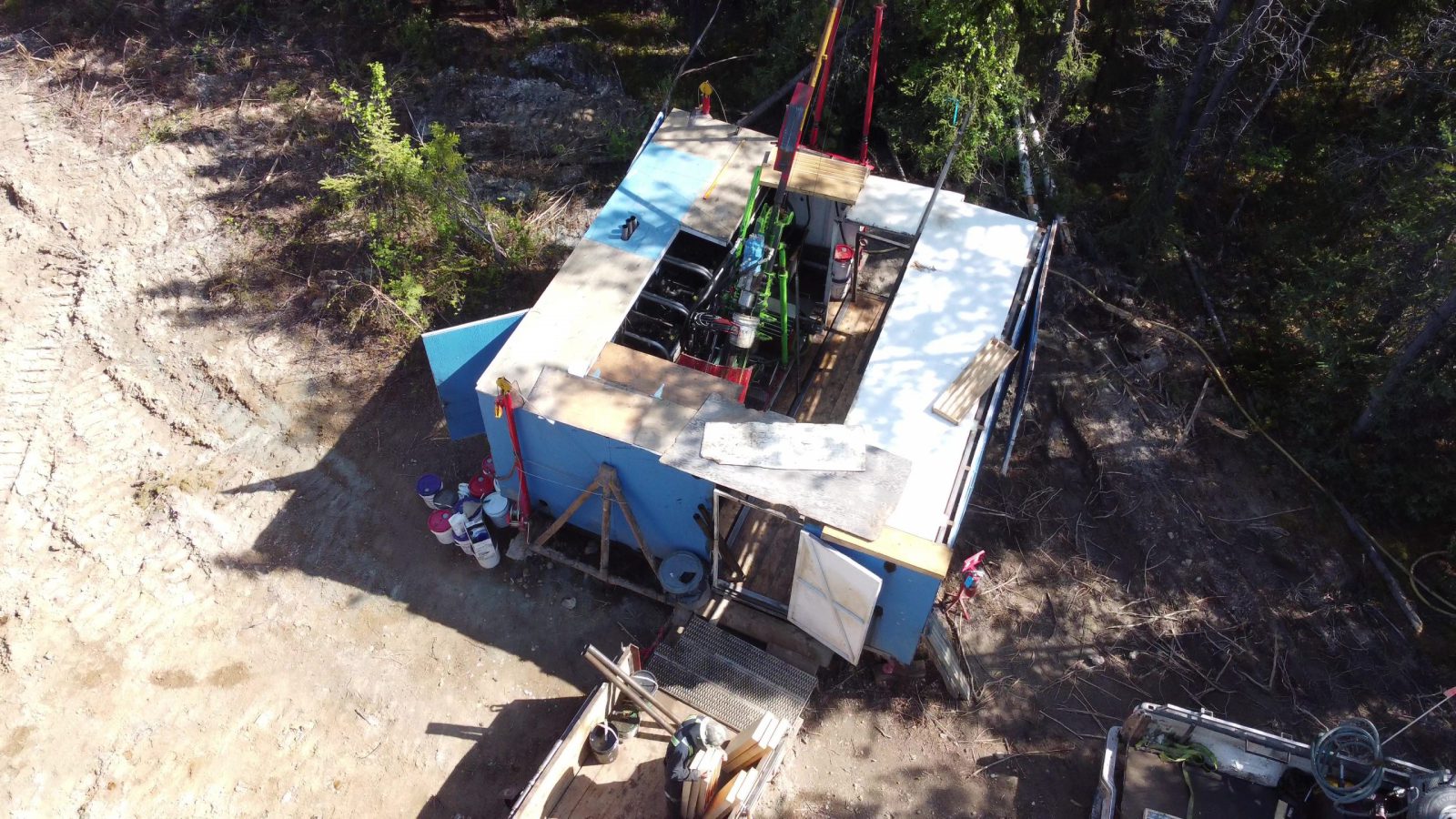 Any progress on that front is bound to attract investor attention, as the price of copper has jumped 58% since May 2020 to US$4.67 a pound amid expectations of resilient global demand, along with constrained future supply. The Chilean government’s copper agency Cochilco recently lifted its 2021 average price projection to US$4.30 a pound, saying a tight market and speculative investor flows could send the metal to all-time highs in the short term.
Any progress on that front is bound to attract investor attention, as the price of copper has jumped 58% since May 2020 to US$4.67 a pound amid expectations of resilient global demand, along with constrained future supply. The Chilean government’s copper agency Cochilco recently lifted its 2021 average price projection to US$4.30 a pound, saying a tight market and speculative investor flows could send the metal to all-time highs in the short term.
Priority targets for this year’s drilling program will include the underlying sulfide potential at Carmacks Zone 1, Carmacks Zone 2,000S, 12 and 13, as well as following up on last year’s success at Carmacks North Zone A.
Results from the 2020 and 2021 drill programs are expected to be included in an updated NI 43-101 compliant mineral resource estimate, the company said.
 In what the company sees as a major step toward a production decision, Granite Creek recently contracted Sedgman and Mining Plus, global leaders in mineral process engineering and mine engineering, to complete optimizing trade-off studies with respect to potential resource development and mineral processing opportunities at the Carmacks project that will include both oxide and sulphide components of the resource. It said these studies will provide the basis for a substantially refined economic assessment (or perhaps directly to Prefeasibility) in early 2022, based on an updated NI 43-101-compliant mineral resource estimate, which is expected to follow the completion of the 10,000-metre drill program.
In what the company sees as a major step toward a production decision, Granite Creek recently contracted Sedgman and Mining Plus, global leaders in mineral process engineering and mine engineering, to complete optimizing trade-off studies with respect to potential resource development and mineral processing opportunities at the Carmacks project that will include both oxide and sulphide components of the resource. It said these studies will provide the basis for a substantially refined economic assessment (or perhaps directly to Prefeasibility) in early 2022, based on an updated NI 43-101-compliant mineral resource estimate, which is expected to follow the completion of the 10,000-metre drill program.
Meanwhile, Granite Creek shares reached a new 52-week high of $28.5 cents on May 31, 2021. The shares were previously trading in a 52-week range of 26 cents and $0.055.
A now dated 2017 PEA on the Carmacks project contemplated a 9 year life open pit mine, with a capital cost at $264 million, including the cost to develop the property to a 4,850 tonne-per-day production rate, with average head grades of 0.98% copper and 0.435 g/t gold. The study was based on oxide material only with base case metals assumptions of $3.25 copper and $1350 gold. The company has stated its intention to vastly increase the overall mine life as well as enlist Sedgman & Mining Plus to investigate optimal scenarios for extraction and processing of both ore types based on Q4 resource update.
 Metallic Minerals Corp. [MMG-TSXV, MMNGF-OTC] is a growth-stage exploration company with a focus on the acquisition and development of high-grade silver and gold in the Yukon within underexplored districts.
Metallic Minerals Corp. [MMG-TSXV, MMNGF-OTC] is a growth-stage exploration company with a focus on the acquisition and development of high-grade silver and gold in the Yukon within underexplored districts.
A member of the Vancouver-based Metallic Group of companies, Metallic Minerals has a portfolio that also includes the La Plata silver-gold project in Colorado, as well as royalty assets in the Yukon’s historic Klondike gold district.
The company aims to create value through discovery, resource expansion and project advancement. It is led by a management team with extensive experience in global exploration and mining, and a track record of $650 million raised in project financings.
Key shareholders include Bay Street financier Eric Sprott.
Metallic’s flagship Keno Silver Project covers 166 km2 and is located in the historic Keno Hill Silver District, an area that has produced over 200 million ounces of silver.
Metallic also has a 100% interest in the McKay Hill property, which covers a belt of silver-lead-zinc related deposits that stretch from the Alaska border to the southern part of the Yukon and includes the Keno Hill Silver District, approximately 50 km to the south.
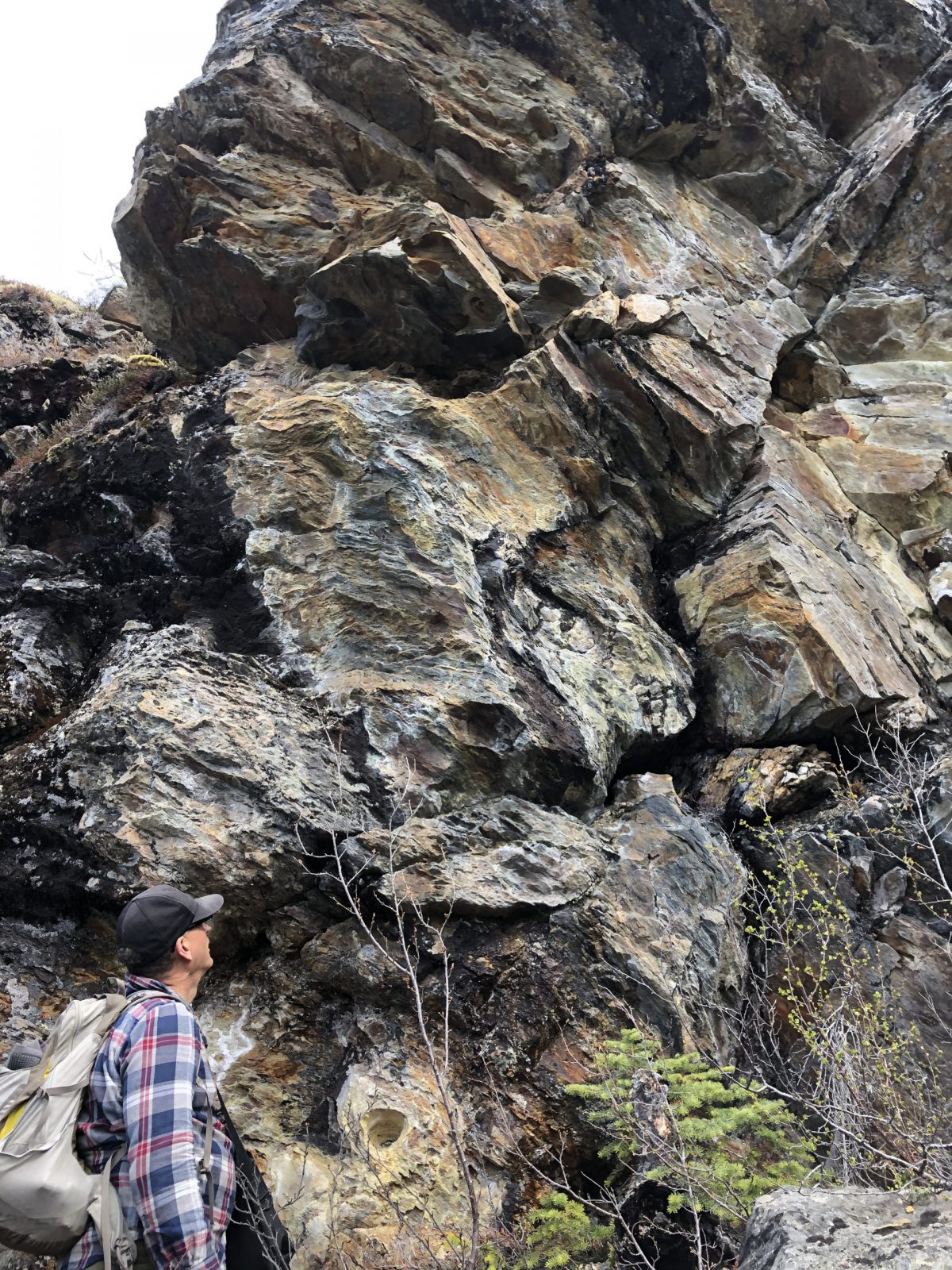 The Keno Project lies adjacent to Alexco Resource Corp.’s [AXR-TSX; AXU-NYSE] United Keno Hill Mine site, which ranks as Canada’s second largest producer of silver, behind Cobalt, Ontario. After a five-year pause, Alexco has recently been putting United Keno Hill back into production.
The Keno Project lies adjacent to Alexco Resource Corp.’s [AXR-TSX; AXU-NYSE] United Keno Hill Mine site, which ranks as Canada’s second largest producer of silver, behind Cobalt, Ontario. After a five-year pause, Alexco has recently been putting United Keno Hill back into production.
Metallic Minerals’ land package covers the eastern portion of the district, along with portions of the western and southern sides, and represents a continuation of the same geological structures and host rock associated with mineralization on Alexco’s ground to the west.
The Keno Silver Project was host to eight historic silver mines with some of the highest grades in the district and five that had average production grades above 5,000 grams/tonne.
However, the eastern portion of the district has seen little modern exploration due to the longstanding, fragmented, private land ownership structure, which has now been largely consolidated by Metallic Minerals.
Initial drilling in that area has confirmed high grade Keno-style vein structures, as well as potential for bulk-tonnage silver mineralization.
Metallic CEO Greg Johnson has said Keno Silver is one of two projects in the Metallic portfolio that look like they can be quickly advanced to the resource stage. The other is the La Plata silver-gold-copper property in southwest Colorado.
In keeping with that goal, the company recently completed a program that consisted of 12 diamond drill holes (2,674 metres) on West Keno targets on the Keno Silver project. Those target areas included Formo and Silver Queen, which are located along the extensions of Alexco’s productive Bermingham and Elsa structural corridors.
Johnson said he was pleased to see that 10 of 11 holes drilled last year on the Formo target intercepted significant mineralization, further confirming the presence of high- grade Keno-style mineralization that remains open to expansion.
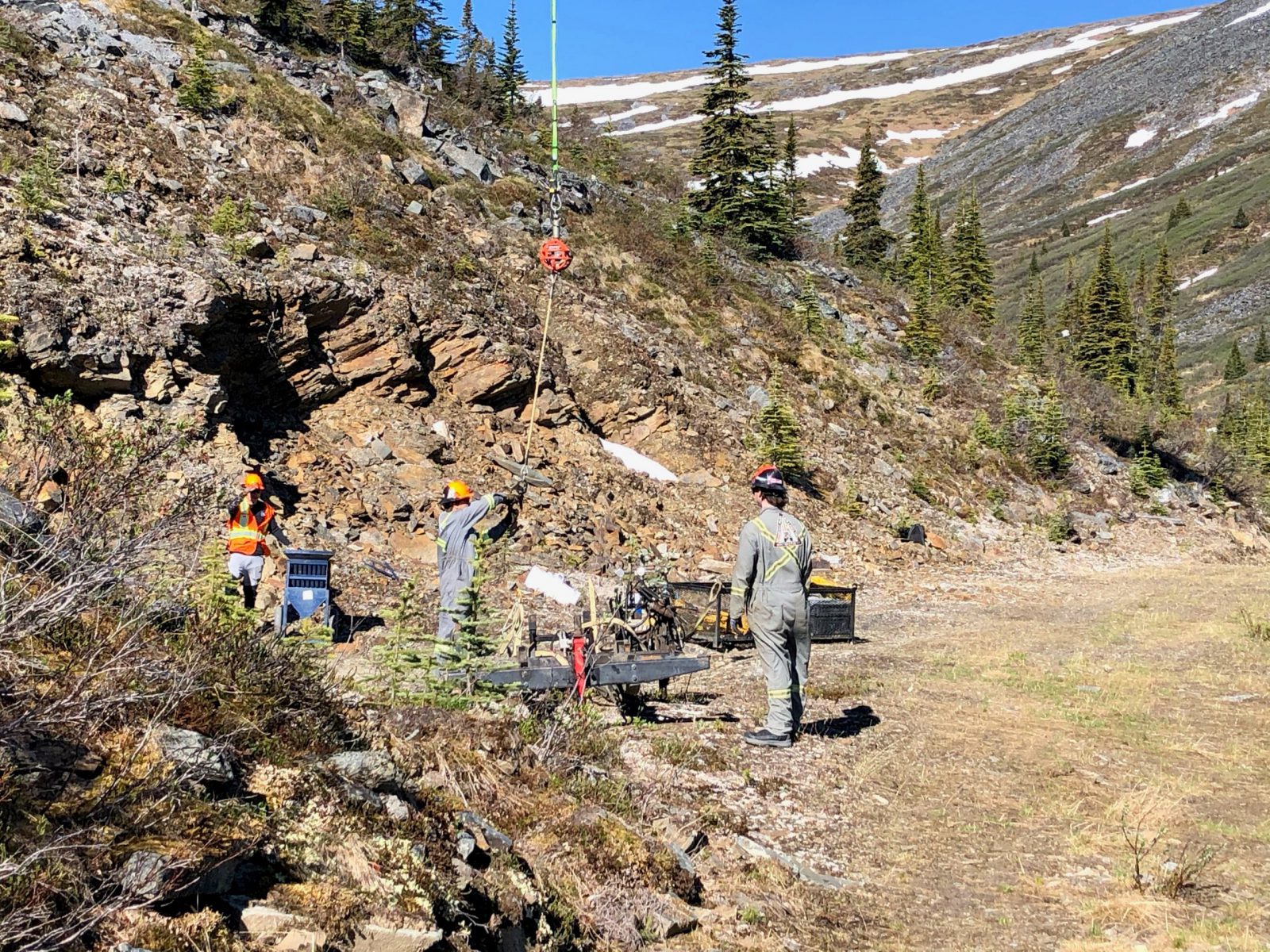 Highlights include drill hole FOR-20-003 in the Formo Target area, which intersected 4.1 metres of 2,536 g/t silver equivalent (AgEq) from a depth of 96 metres to 100.1 metres, including 3.0 metres of 3,425.9 g/t AgEq (1,568 g/t Ag, 29.45% lead and 15.35% zinc).
Highlights include drill hole FOR-20-003 in the Formo Target area, which intersected 4.1 metres of 2,536 g/t silver equivalent (AgEq) from a depth of 96 metres to 100.1 metres, including 3.0 metres of 3,425.9 g/t AgEq (1,568 g/t Ag, 29.45% lead and 15.35% zinc).
Having raised $11 million from various financings in 2020, the company said planning is underway for a significantly expanded exploration program at the Keno Silver project in 2021, with field activities expected to begin in the second quarter.
Metallic has said it sees the opportunity to rapidly define an NI 43-101-compliant resource with additional drilling on its La Plata silver-gold-copper property in southwest Colorado
Exploration by Rio Tinto Plc [RIO-NYSE] and Freeport-McMoran Inc. [FCX-NYSE] in the 1950s and 1970s focused on bulk tonnage disseminated and stockwork porphyry copper-silver-gold mineralization.
The company said 49 holes covering 12,700 metres have defined a large-scale mineralized porphyry system with high-grade copper plus significant silver and gold.
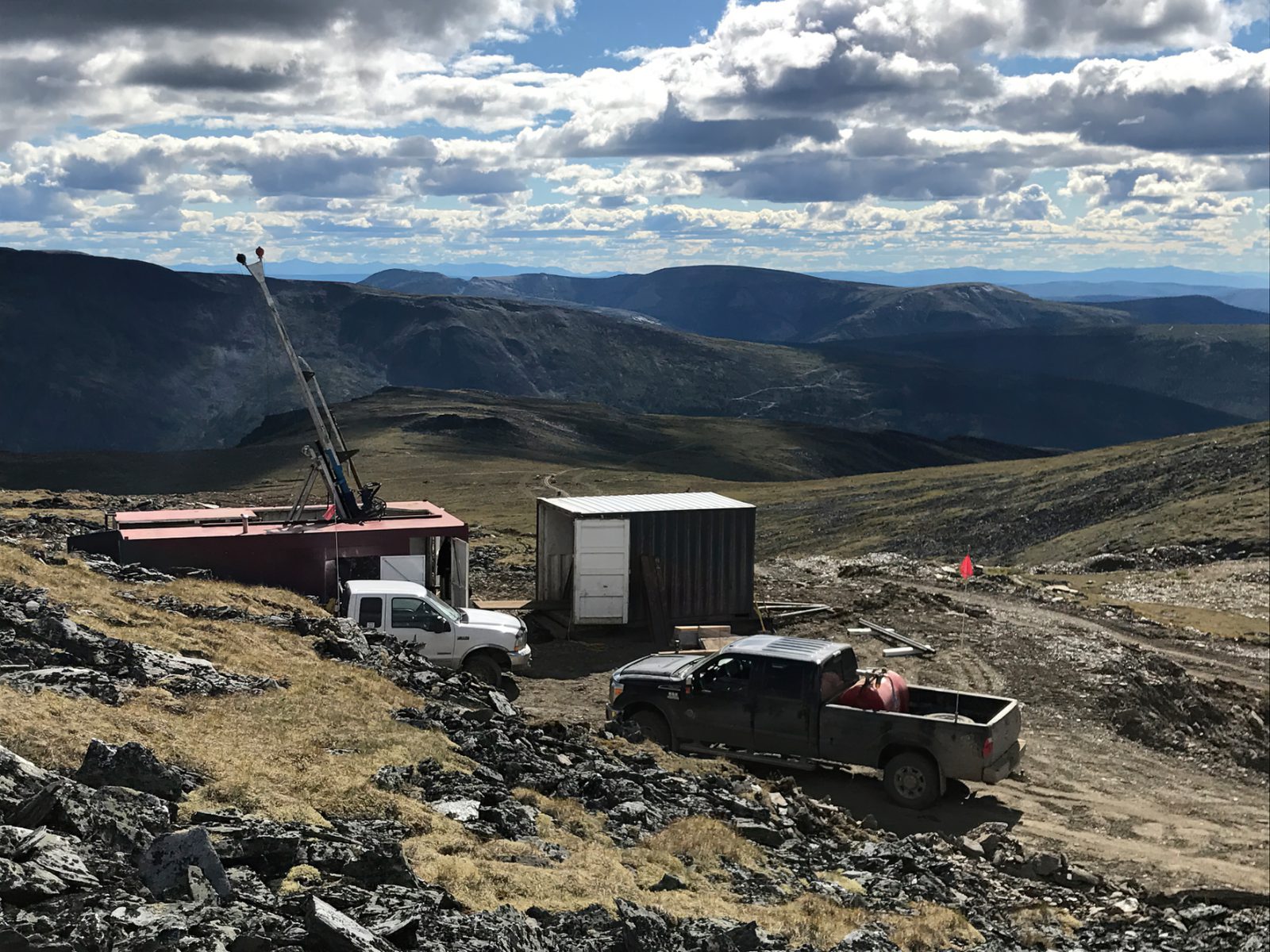 Metallic can generate the funding needed for those projects from royalty assets in Yukon’s Klondike mining district. In September, 2017 Metallic struck an option deal to acquire a 100% interest in 36.4 square kilometres of creek and bench mining rights along the Australia Creek drainage, a tributary in the Indian River near Dawson City.
Metallic can generate the funding needed for those projects from royalty assets in Yukon’s Klondike mining district. In September, 2017 Metallic struck an option deal to acquire a 100% interest in 36.4 square kilometres of creek and bench mining rights along the Australia Creek drainage, a tributary in the Indian River near Dawson City.
In parallel with this acquisition, Metallic has entered into a production royalty agreement with an experienced alluvial mining operator with respect to a 2.8 square kilometre portion of the property.
Under this agreement, the operators will have exclusive rights to mine the Lower Australia Creek property, in exchange for a 12% royalty on all gold production payable to Metallic.
On June 23, 2021, Metallic shares were trading at 54 cents in a 52-week range of $1.30 and 39 cents, leaving the company with a market cap of $68.63 million based on 127.1 million shares outstanding.
